Politburo member and Prime Minister Pham Minh Chinh met with President of the European Commission Ursula von der Leyen in Nice, France, on June 9, 2025_Photo: VNA
Factors affecting EU foreign direct investment
The world is witnessing profound changes in the political, economic , scientific - technological and environmental aspects, which have multi-dimensional impacts on the movement of international investment capital flows. In this context, strategic competition between major countries is prominent, thereby promoting multinational corporations (MNEs) to adjust their global investment strategies. According to the World Investment Report 2024 of the United Nations Conference on Trade and Development (UNCTAD), in the past 5 years, new investment flows (greenfield) of the world's top 100 corporations (excluding the financial sector) have impacted the trend of stronger regionalization. These corporations have increased investment in countries close to their headquarters or core target markets (near-shoring). This trend is clearly evident in strategic sectors such as semiconductors, pharmaceuticals and environmental technology. In addition to political pressures related to reshoring, increasingly stringent environmental regulations, coupled with the rapid development of automation and robotics technology, are significantly reducing the low labor cost advantage of developing countries in the global investment allocation strategies of multinational corporations.
The Fourth Industrial Revolution is entering a period of strong development and clear shaping. Since 2020, the breakthrough of many new technologies has had a profound impact on the fields of politics, economics, culture - society and international relations. Under the influence of this process, FDI capital flows tend to shift from the goal of seeking efficiency to seeking regional markets; from investing in vertical global value chains to investment models in production facilities and industrial clusters with higher spillover effects.
The COVID-19 pandemic has strongly impacted the trend of shifting and restructuring the global supply chain, through expanding the supplier network to increase the ability to adapt to global "shocks". This adjustment reflects the need to optimize costs, while spreading risks, avoiding over-dependence on a few markets. Along with that, climate change and green transformation requirements are pushing businesses to increase investment in renewable energy, environmental technology and seek investment and production models in a sustainable, safe and environmentally friendly direction.
In addition to the above factors, EU FDI is also significantly affected by adjustments in internal policies. The EU is taking a more cautious approach to outward investment, with the focus shifting from market access and cost optimization to prioritizing strategic factors, supply chain resilience and national security concerns. A typical example is the “strategic autonomy” policy, under which the EU encourages businesses to increase investment in key sectors such as batteries, healthcare, pharmaceuticals, digital technology and clean energy. At the same time, investment screening mechanisms for sensitive sectors such as semiconductors, artificial intelligence (AI), quantum technology, etc. make EU businesses increasingly cautious when investing in high technology outside the bloc. In addition, the EU Green Deal initiative and the sustainable development regulation system are directing EU FDI flows into areas such as renewable energy, environmental technology and sustainable production. EU businesses are increasingly focusing on finding partners and markets with potential for clean energy development, applying environmentally friendly production standards to realize the goal of carbon neutrality and reducing dependence on fossil fuels.
Outstanding trends in EU foreign direct investment
The combined impact of the above factors combined with the Russia-Ukraine conflict has not only reshaped the way the EU interacts with the world, but also directly impacted the EU's outward FDI flows. Since 2020, the EU's outward FDI flows have recovered slowly, been unstable and significantly adjusted in terms of location, sector and investment target.
In terms of investment capital, from the 90s of the 20th century until before the COVID-19 pandemic, the EU played the role of the world's largest FDI investor. During the period 2010 - 2019, the EU's average annual FDI inflows abroad reached about 500 - 600 billion USD. However, since the COVID-19 pandemic, the EU's FDI inflows abroad have tended to fluctuate strongly. After a significant increase in 2021, the investment scale has decreased to about 170 - 180 billion USD/year, making the EU behind the US and Japan in terms of total FDI. According to UNCTAD statistics, in the past 2 - 3 years, EU FDI has shown signs of slowing down and remained at a significantly lower level than the period before the COVID-19 pandemic. Meanwhile, FDI flows from other major economic centers, such as the US, Japan and China, have generally remained stable and have tended to increase from 2018 to present (1) .
About the field Investment, investment activities are mainly concentrated within the EU and a number of countries that are capable of supplying important raw materials or have the potential to develop high technology, meeting EU production and environmental standards. The increase in FDI capital flows to destinations near Western Europe shows a clear shift of manufacturing activities to sectors that are strategic for the EU. The average capital size for each FDI project in the manufacturing sector in 15 neighboring European countries has increased from 44.5 million USD in 2019 to 130.8 million USD in 2023 (2) .
EU multinational corporations are shifting their investments more strongly to the service sector. According to global FDI data, the service sector accounts for about two-thirds of the total FDI projects of the world's top 100 multinational corporations, of which 53 are from the EU. In the technology sector alone, services account for 91% of the total FDI projects (3) . In addition, multinational corporations from Europe and North America are accelerating the establishment of regional service centers in Asia to provide essential support services, thereby minimizing risks and increasing operational efficiency for FDI activities.
About the location In terms of investment, EU businesses are gradually adjusting to limit their dependence on a number of large markets, especially China, by adjusting their investment strategies to prioritize within the EU, neighboring European countries or countries with stable and friendly political and economic relations (friend-shoring). The goal of this adjustment is to enhance control, minimize geopolitical and geo-economic risks and ensure the stability of the supply chain.
However, this shift does not mean withdrawing from major markets, but reflects a “de-risking” and diversification strategy, whereby businesses maintain a presence to avoid dependence on specific regions. This reflects the increasingly clear regionalization trend in investment activities of EU multinational corporations. Notably, the trend of EU businesses shifting production closer to Western Europe to enhance supply chain resilience after the COVID-19 pandemic continues to be strongly promoted. According to fDi Markets, in the period 2022 - 2023, the total capital committed to production projects in 15 countries in the Central and Eastern Europe (CEE) and North Africa region exceeds 82 billion USD. This is the highest level in the 2 consecutive years so far and an increase of 62% compared to the same period 2 years before the COVID-19 pandemic (2018 - 2019) (4) .
In the Asia-Pacific region, China remains one of the EU's most important markets, but FDI flows from the EU to China have slowed down recently. This is due to the impact of trade and technology competition between the US and China, along with Chinese enterprises becoming increasingly stronger and competing more fiercely with EU corporations. Since 2019, a number of large EU manufacturing corporations, such as BASF, Volkswagen, BMW (Germany), etc., have reduced the number of new FDI into China by half compared to the previous 5-year period (5) . Meanwhile, India is emerging as a strategic investment destination for the EU after the COVID-19 pandemic, thanks to its advantages of a large domestic market, abundant human resources, and strategic geopolitical and geo-economic position in the Indo-Pacific region. These factors are consistent with the EU's diversification and risk reduction policy. On average, the annual FDI inflows from the EU to India in the post-COVID-19 period have been higher than in the 2013-2019 period. Many EU businesses are positioning India as an attractive alternative or complementary investment destination to build more flexible and diversified supply chains outside of China.
Southeast Asia continues to be a region of interest to the EU in its strategy to diversify its global supply chains. Singapore maintains its role as a leading financial, technology and services center in the region, attracting high-value FDI inflows and becoming the regional headquarters of many EU enterprises. FDI from the EU to Singapore focuses mainly on high-value-added service sectors, such as research and development (R&D), regional operations centers, financial services and information technology. Malaysia is chosen by the EU as an investment destination in the electronics manufacturing, medical equipment and information technology services industries, thanks to its relatively high-skilled workforce and developed infrastructure. In Thailand, the EU continues to expand investment, especially in the automotive and components, electronics and services industries. Indonesia is emerging as a potential market for EU investment, with advantages in market size and rich natural resources. EU investments in Indonesia are focused on critical minerals processing (especially the electric vehicle battery supply chain) and consumer goods manufacturing.
In the coming years, the EU's foreign direct investment activities in general and in the Asia-Pacific region in particular are forecast to continue to be influenced by strategic competition between major economic centers, the strong development of the Fourth Industrial Revolution, along with the trend of green transformation and promoting the EU's strategic autonomy. Firstly, the EU will continue to promote the multilateralization of investment to markets with favorable business environments in the Asia-Pacific region, following models such as "China + 1" or "China + N", in which "N" can be a group of countries to optimize costs and ensure supply chain security. Secondly, in the coming time, EU FDI will likely focus on areas related to green transformation, such as renewable energy, sustainable production and circular economy, linked to the goal of building strategic autonomy capacity. Environmental, social and governance (ESG) standards will increasingly become a key factor in the process of reviewing and selecting investment locations for EU businesses. Countries that are highly rated by the EU for their political reliability, potential for diversification and supply chain security, and possessing high-quality human resources and developed digital infrastructure, will have an advantage in attracting FDI flows from the EU.
Opportunities, challenges and some solutions to contribute to improving the effectiveness of promoting FDI from the EU to Vietnam
Since Vietnam and the EU officially established diplomatic relations in 1990, the EU has always been one of Vietnam's leading important partners in the process of innovation and international integration. To date, the two sides have built a solid foundation for bilateral cooperation through important legal and institutional frameworks, including: the Framework Agreement on Cooperation (FCA) signed in 1995; the Comprehensive Partnership and Cooperation Agreement (PCA) effective since 2016; the Vietnam - EU Free Trade Agreement (EVFTA) effective since 2020; the Vietnam - EU Investment Protection Agreement (EVIPA) awaiting ratification; and many other bilateral cooperation agreements and arrangements. Economically, the EU is currently Vietnam's third largest trading partner and seventh largest FDI investor. In addition to alliance-level cooperation, Vietnam-EU relations are also strengthened through bilateral relations with each member state, in which Vietnam has established comprehensive strategic partnerships, strategic partnerships or comprehensive partnerships with all key EU member states.
Assembling the European multi-purpose vehicle Peugeot Traveller at THACO's high-end passenger car factory in Da Nang city_Photo: VNA
The strong development of Vietnam - EU relations, with increasingly consolidated political trust, is opening up many opportunities for economic cooperation in general and bilateral investment cooperation in particular, especially in sectors and fields where both sides have common needs and interests. The EU and most of its member states identify Vietnam as an important partner in the strategy for the Asia - Pacific region. In a phone call with General Secretary To Lam in April 2025, President of the European Council Antonio Costa emphasized that the two sides are "important, trustworthy and stable partners" of each other, and affirmed that "Vietnam is a pillar partner of the EU in Southeast Asia and the Vietnam - EU relationship deserves to be raised to a new level" (6) .
In the context of the complicated developments in the world's geopolitical and geo-economic situation, Vietnam has many favorable opportunities to promote FDI attraction from the EU, especially taking advantage of the EU's trend of diversifying investment locations to minimize risks. With a stable socio-political background, dynamic economic development and consistent foreign policy, Vietnam is considered by many EU enterprises as a safe and reliable investment destination in the Asia-Pacific region. If the FDI promotion policy is effectively implemented, exploiting the above favorable factors and clearly positioning Vietnam as a reliable "friend" in the EU's investment shifting strategy to partner countries and friends (friend-shoring), Vietnam will have many opportunities to increase the scale and quality of FDI capital flows from the EU in the coming time.
More importantly, Vietnam can take advantage of the EU's adjustment of its foreign investment policy to promote attracting FDI from the EU into priority sectors and fields in the new development stage. In the context of the EU promoting the implementation of the "European Green Deal", fields related to green transformation and the environment, especially renewable energy, have emerged as areas with great potential for investment cooperation between the two sides. Recently, the research and implementation of wind power projects, green hydrogen production and energy storage technology by a number of large EU corporations, such as Copenhagen Infrastructure Partners, Ørsted (Denmark), PNE (Germany), Air Liquide (France), etc. in Vietnam shows a positive signal from the EU's "green" investment trend. If Vietnam builds and effectively implements focused FDI promotion programs with specific plans in line with sustainable development orientation and the needs of EU investors, the opportunity to attract high-quality FDI capital flows from this region will become increasingly open.
With high political trust, young human resources, active support policies and an initially formed semiconductor ecosystem, Vietnam has the opportunity to attract FDI from the EU in the fields of digital transformation, semiconductors, pharmaceuticals, medical equipment and biotechnology, in the context of the EU promoting supply chain diversification.
One of Vietnam’s significant advantages in attracting FDI from the EU is the implementation of the EVFTA and EVIPA (7) . The preferential tariff commitments and rules of origin in the EVFTA help EU businesses consider Vietnam as a strategic production base for exporting to the EU or expanding markets in the region. Commitments on services, labor, environment and sustainable development also facilitate investment in high value-added sectors such as logistics, finance, information technology and green transformation. With clear and transparent investment protection regulations, the EVIPA contributes to enhancing the confidence of EU investors when establishing or expanding operations in Vietnam. Actively promoting the EVIPA, even when the agreement has not yet come into effect, also demonstrates Vietnam’s commitment to building an investment environment that meets international standards. This is a competitive advantage that needs to be promoted to more effectively attract FDI capital flows from the EU, serving the goal of sustainable development in the coming period.
In addition to great opportunities, Vietnam also faces many challenges in promoting FDI from the EU. The slow recovery of the EU economy after the COVID-19 pandemic, along with the increasing protectionist trend, has weakened the motivation of EU enterprises to invest abroad. In fact, FDI capital flows from the EU to Vietnam have tended to decrease in recent years. According to data from the Foreign Investment Agency (Ministry of Planning and Investment), the total registered FDI capital from the EU to Vietnam in 2022 decreased by 46.24%, in 2023 decreased by 27.57% and in 2024 continued to decrease by 43% (8) . This shows that attracting new FDI capital flows from the EU is facing many obstacles.
International competition in attracting FDI from the EU is increasingly fierce, posing a significant challenge for Vietnam. The EU's "strategic autonomy" policy to ensure supply chain security is creating advantages for countries geographically closer to Europe. At the same time, many countries in the Asia-Pacific region are also promoting FDI promotion and incentive policies, focusing on priority areas such as manufacturing, industry, renewable energy, digital technology, logistics and infrastructure. Typically, the Philippines has implemented the Green Corridor Investment Program from 2023 to attract FDI in strategic industries, becoming an attractive destination for the EU in the field of solar and wind power. Thailand has issued many policies related to "green" investment, such as the Climate Change Law, carbon pricing and tax programs, and at the same time supporting businesses to improve their capacity to meet EU environmental standards.
Some adjustments in the EU's strategies and policies may adversely affect FDI flows into Vietnam. The EU's implementation of an overseas investment screening mechanism for a number of sensitive sectors may make EU businesses more cautious when investing in high-tech projects such as semiconductors, artificial intelligence (AI), and quantum technology in Vietnam, due to obstacles in strict control processes. In addition, the "European Green Deal" with strict environmental, social and governance (ESG) standards also places high demands on Vietnamese businesses in investment cooperation. To participate in the EU's supply chain, Vietnamese businesses need to comply with standards on transparency, traceability, labor and environment, which requires significant investment in technology, processes and governance. If these requirements are not met, the ability to access FDI flows associated with supply chain shifts and green transformation from the EU will be limited.
It can be seen that the adjustment in the EU FDI trend has both brought opportunities and posed challenges in attracting FDI from this bloc. The problem is that there needs to be effective policies and solutions to "transform" maximum opportunities into practical results. Therefore, it is necessary to build a common FDI promotion strategy, focusing on proactiveness, clearly defining the focus on partners, industries/fields and priority projects, while improving efficiency, professionalism and methodical organization in implementation.
Unlike other FDI partners, the EU is not a homogeneous bloc, as its members have different potentials, business cultures and strategic priorities for overseas investment. Therefore, it is necessary to shift the current widespread and widespread approach to promoting FDI from the EU to a focused approach, focusing on three levels: country, priority sector/sector and target enterprise.
First of all, it is necessary to segment EU member states according to the motto of "deep understanding of each market", flexibly combining geographical areas, business culture with the strengths and responsiveness of partners in the direction of prioritizing FDI attraction. Referring to international experience, it is possible to segment the EU into groups of countries according to geography, strengths and strategic priorities for overseas investment, such as the Germany - Austria - Switzerland (DACH) group, the France - Belgium - Netherlands - Luxembourg (Benelux) group, the Northern European group, the Southern European group (Spain, Italy...) and the Eastern European group. Each group of countries needs a different approach to promoting FDI. For example, Germany excels in manufacturing (automobiles, machinery, precision engineering), automation, renewable energy, chemicals, pharmaceuticals and prioritizes diversifying high-quality supply chains. Therefore, the FDI promotion message from Germany needs to emphasize quality, reliability and the ability to join the global value chain. Meanwhile, the Netherlands has strengths in logistics services, high-tech agriculture, fintech and clean energy, focusing on logistics centers, seaports, smart agriculture and environmental technology. Therefore, the message to promote FDI from the Netherlands needs to emphasize the geo-strategic advantages of the country receiving investment, along with the potential to develop into a logistics center in the region and the orientation to build sustainable agriculture.
In addition to the national segment, it is necessary to clearly identify priority sectors and fields for promoting FDI from the EU based on Vietnam's competitive advantages and development orientation along with the practical needs of partners. For example, in the field of semiconductors and digital transformation, Vietnam has advantages in young human resources, high technology level, reasonable costs in some production stages, along with attractive investment incentive policies. Meanwhile, the EU is promoting the diversification of the chip supply chain and enhancing the production capacity of strategic components to ensure industrial and technological security. On that basis, the message of promoting FDI from the EU in the field of semiconductors and digital transformation needs to be clearly oriented, emphasizing Vietnam's role as a reliable partner in the global semiconductor supply chain, and at the same time a potential innovation center of the EU in the Asia region. This is the basis for attracting FDI projects with high added value, contributing to the sustainable development of the country's high-tech industry.
After segmenting by country level and priority sectors/areas, identifying EU enterprises with high investment potential in Vietnam becomes a key factor in organizing effective advocacy and promotion activities. For large corporations, it is necessary to deploy high-level approaches through diplomatic channels, ministries, branches or reputable consulting organizations that have close relationships with the leaders of these corporations. The experience of successfully approaching and promoting FDI of NVIDIA Corporation (USA) in the semiconductor sector in recent times is a valuable practical reference that can be applied to promote large EU corporations to invest in Vietnam. In particular, proactively building appropriate incentive and support policy packages to create favorable conditions and enhance attractiveness for strategic investors.
Along with the above measures, it is necessary to synchronously and substantially implement solutions to perfect institutions and laws, especially administrative procedure reform associated with digital transformation; focus on improving the investment environment, modernizing infrastructure and enhancing the competitiveness of domestic enterprises. At the same time, innovate and improve the quality of investment services in a professional and modern direction; enhance the operational efficiency of Vietnam's FDI promotion representatives in EU countries; build a team of FDI promotion officers with high expertise and good implementation capacity. When this solution is implemented synchronously and effectively, Vietnam will take advantage of opportunities from the EU's positive outward investment trend, thereby attracting quality FDI capital flows from the EU, serving the country's socio-economic development goals and orientations in the new period./.
------------------------------
* The article was conducted within the framework of the National Scientific Project "Research on solutions to improve the effectiveness of international economic integration of Vietnamese seafood enterprises into the EU market", code KX.06.04/21-30, Ministry of Science and Technology
(1) See: “World Investment Report 2024”, UN Trade and Development (UNCTAD), 2024, https://unctad.org/publication/world-investment-report-2024
(2) See: “World Investment Report 2024”, Ibid .
(3) See: Alex Irwin-Hunt: “The rise of nearshoring FDI close to Europe”, fDi Intelligence, February 21, 2024, https://www.fdiintelligence.com/content/7944b519-4da7-56d7-b1b5-c0fdbe0e10fd
(4) Alex Irwin-Hunt: “The rise of nearshoring FDI close to Europe”, Tlđd
(5) Alex Irwin-Hunt: “ Large multinationals have become more regional” (Translation: Multinational corporations increasingly shift their operations to regional areas, fDi Intelligence, July 10, 2024, https://www.fdiintelligence.com/content/8449cd89-6c5a-5481-bee9-781785814e9e)
(6) BNG: “Vietnam - EU relations deserve to be raised to new heights”, Government Electronic Newspaper, April 30, 2025, https://baochinhphu.vn/moi-quan-he-viet-nam-eu-xung-dang-duoc-nang-len-tam-cao-moi-10225043023401186.htm
(7) See: “Report on EU FDI to Vietnam in the context of implementing EVFTA and EVIPA”, VEPR - KAS, October 2022, https://www.kas.de/documents/267709/21339049/FDI+flows+from+the+EU+to+Vietnam+in+the+context+of+EVFTA+and+EVIPA.pdf/6040b929-e29a-23ef-4383-b36dc589a492?version=1.0&t=1668587842125
(8) Author synthesized from statistics of Foreign Investment Agency
Source: https://tapchicongsan.org.vn/web/guest/the-gioi-van-de-su-kien/-/2018/1109002/xu-huong-dau-tu-truc-tiep-nuoc-ngoai-cua-lien-minh-chau-au--co-hoi-va-thach-thuc-doi-voi-viet-nam.aspx


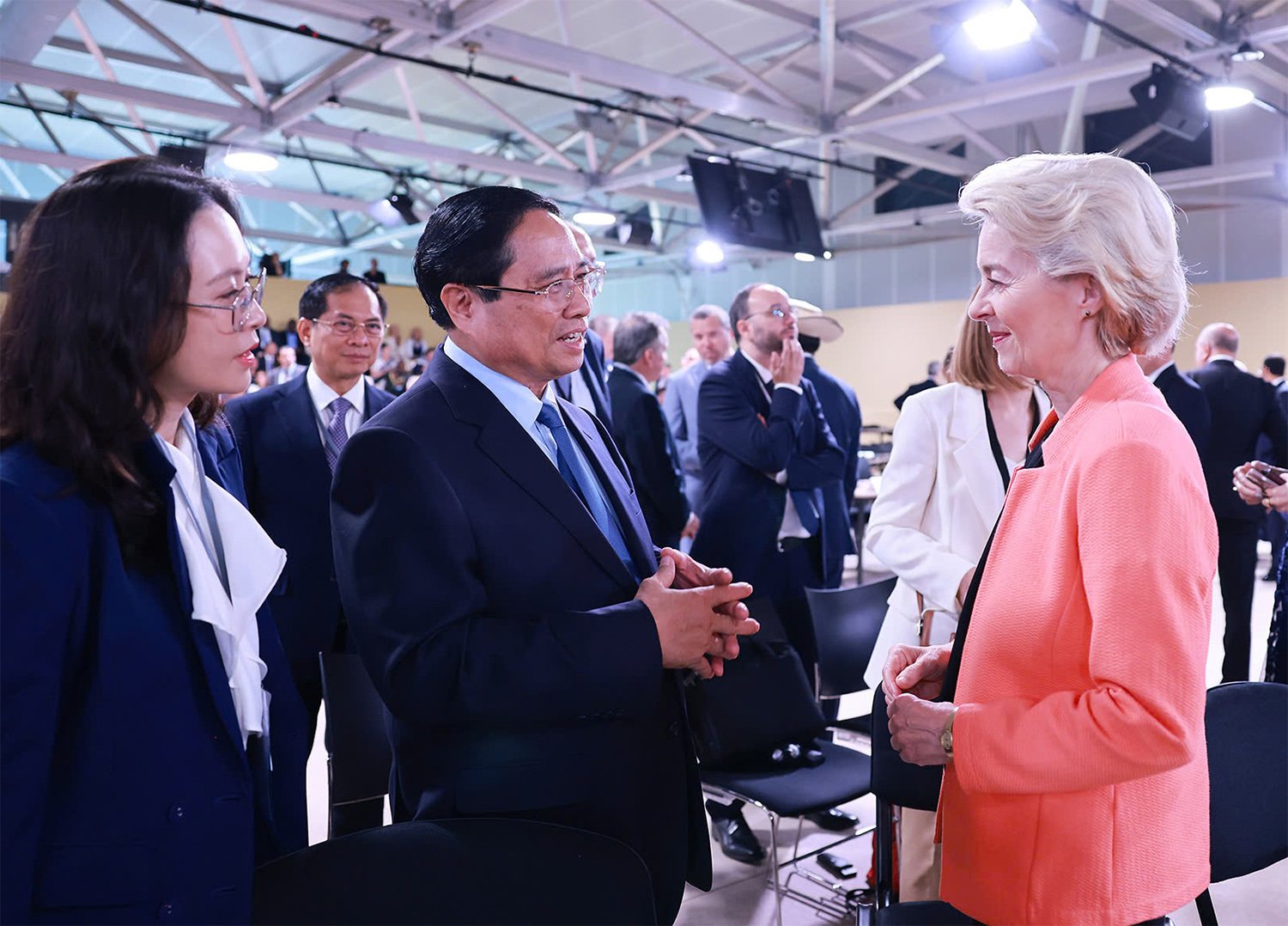
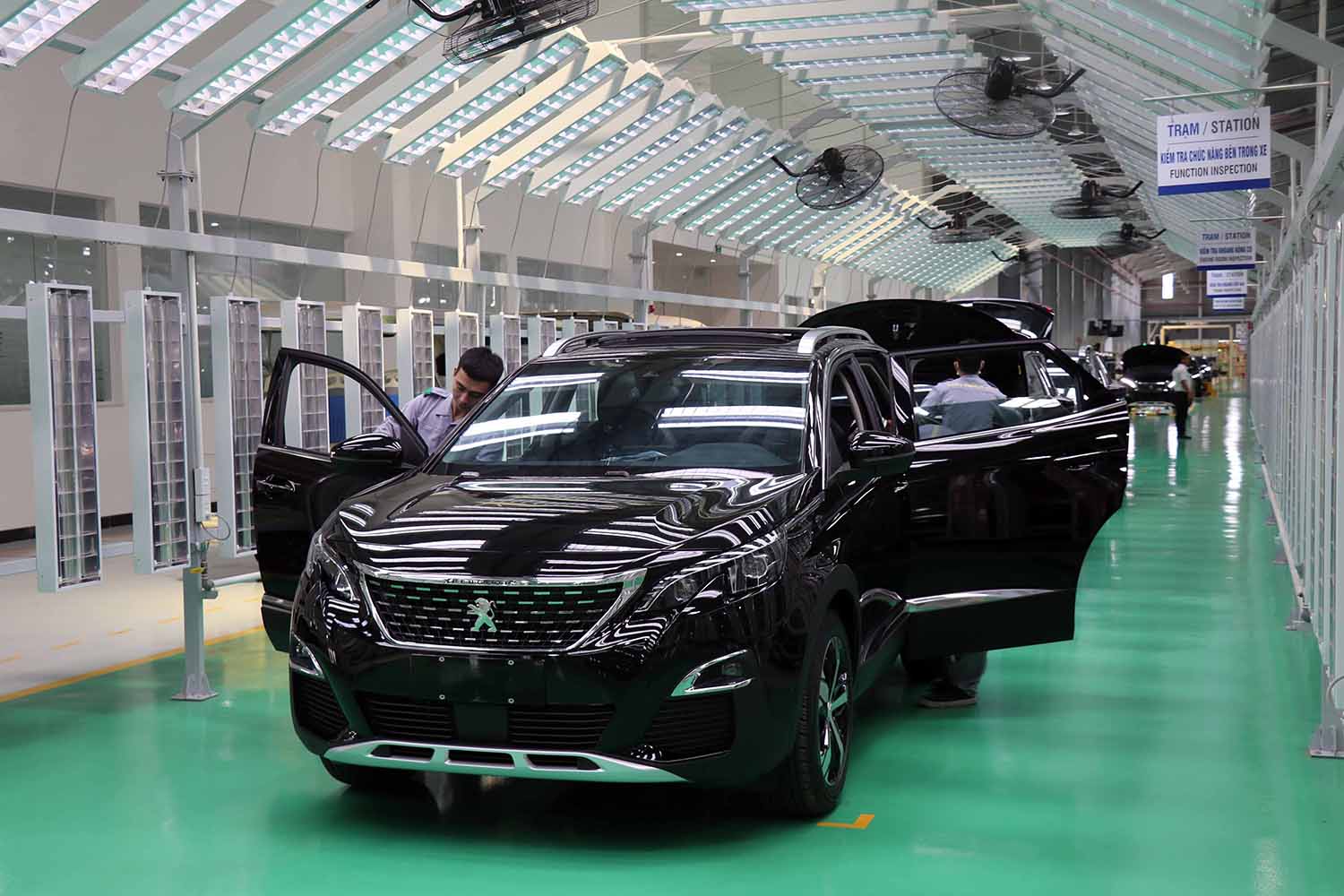



![[Photo] Cat Ba - Green island paradise](/_next/image?url=https%3A%2F%2Fvphoto.vietnam.vn%2Fthumb%2F1200x675%2Fvietnam%2Fresource%2FIMAGE%2F2025%2F12%2F04%2F1764821844074_ndo_br_1-dcbthienduongxanh638-jpg.webp&w=3840&q=75)






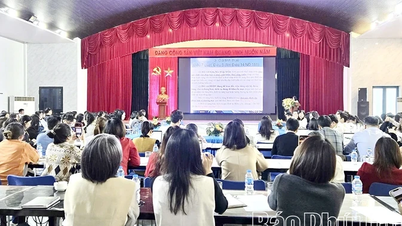
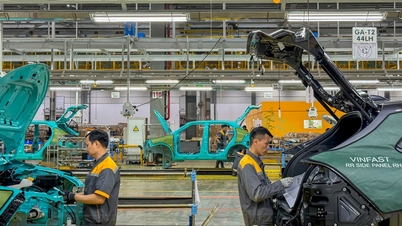

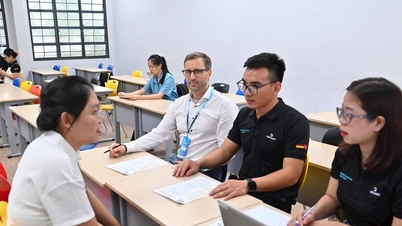

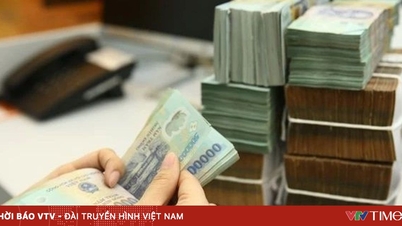
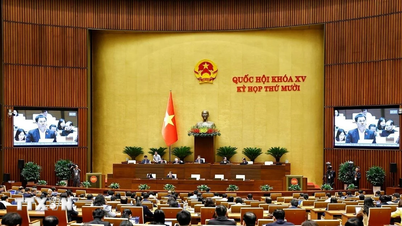

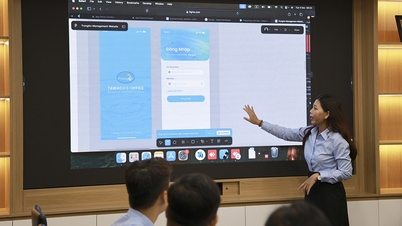

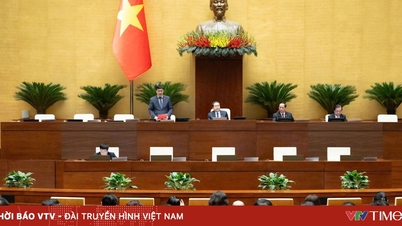
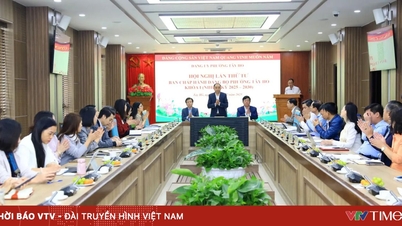
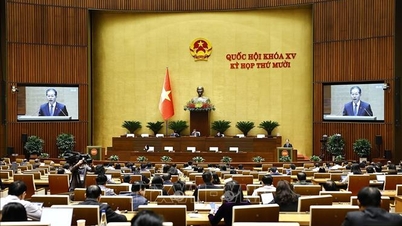

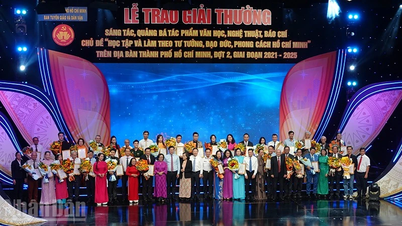







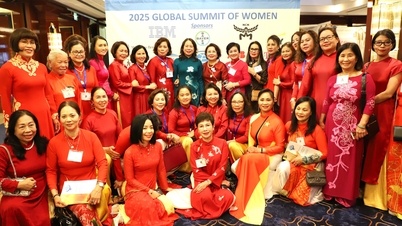



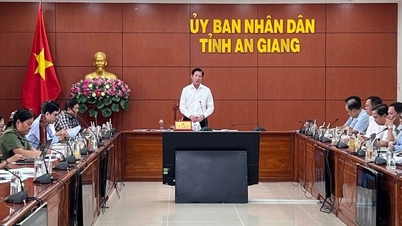

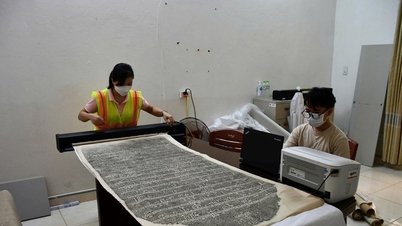





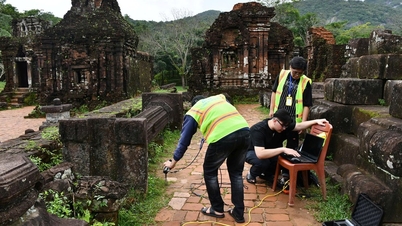



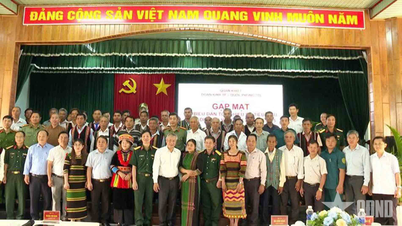







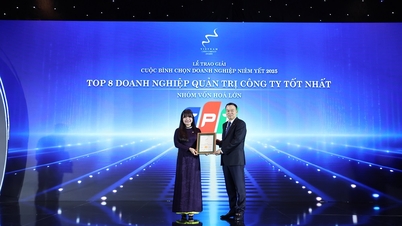

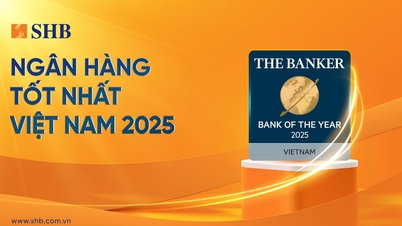
![[VIMC 40 days of lightning speed] Da Nang Port: Unity - Lightning speed - Breakthrough to the finish line](https://vphoto.vietnam.vn/thumb/402x226/vietnam/resource/IMAGE/2025/12/04/1764833540882_cdn_4-12-25.jpeg)
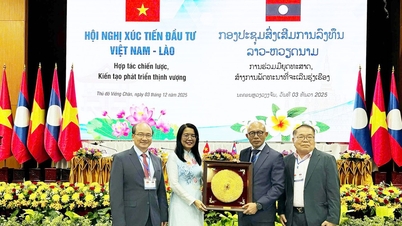
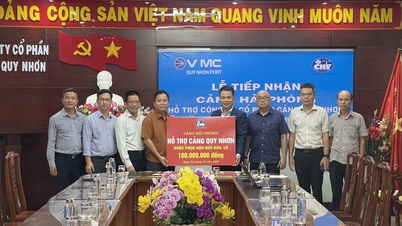







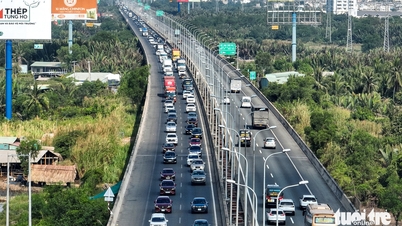





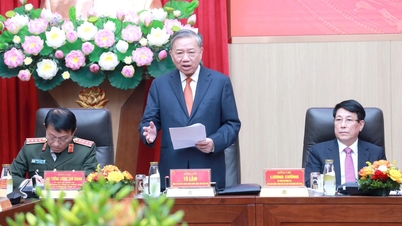

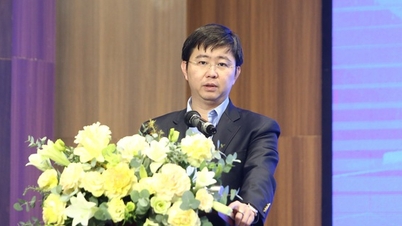

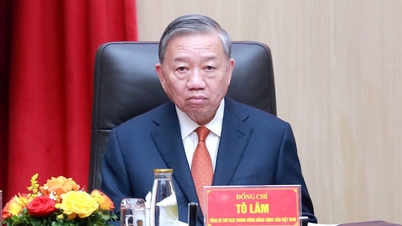


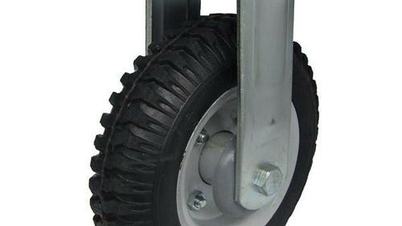



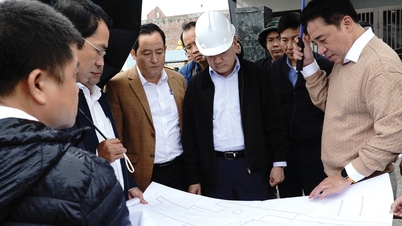


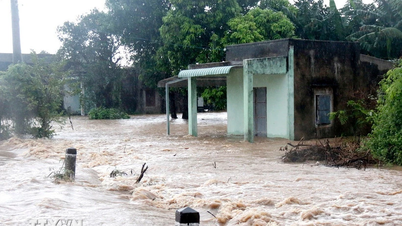














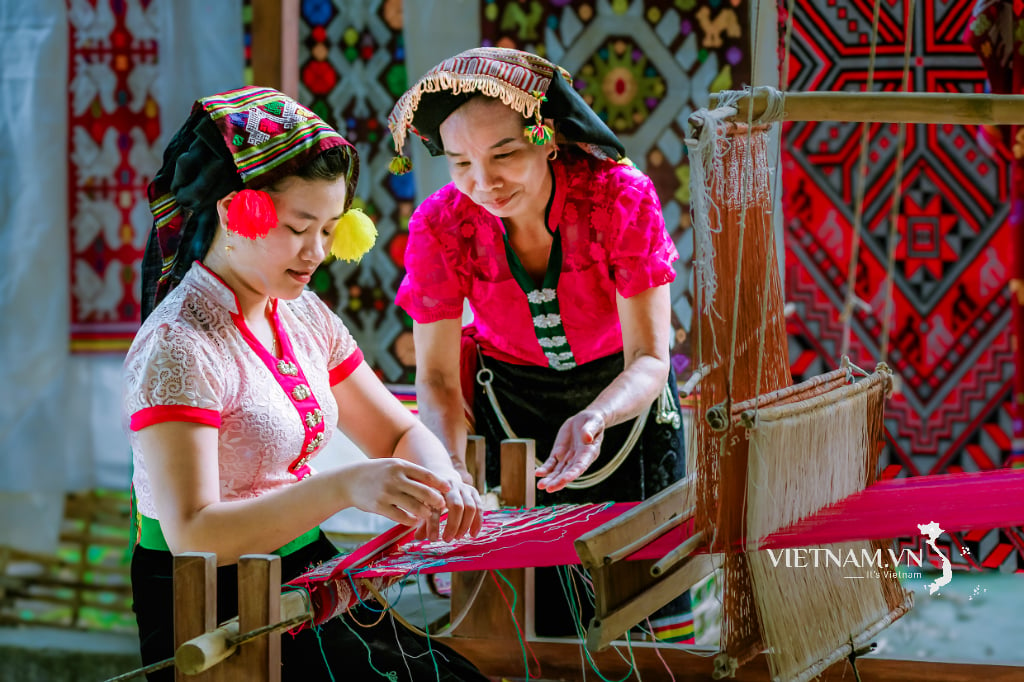



Comment (0)